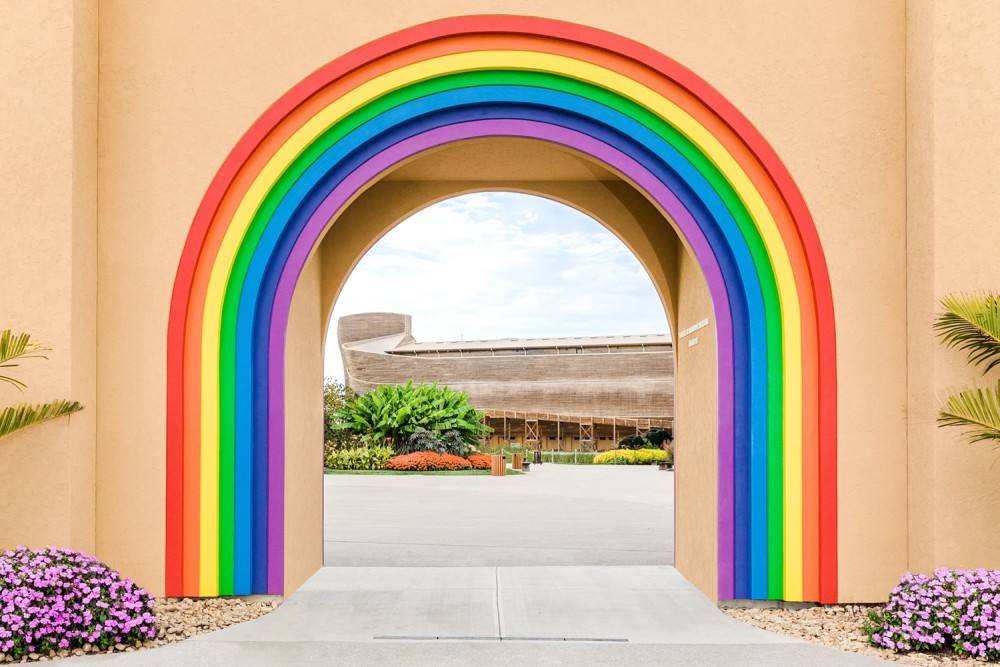A road trip to Noah’s Ark
My in-laws took the whole family to a monument to young earth creationism. What could go wrong?

The Ark Encounter, in Williamstown, Kentucky (Photo: Answers in Genesis)
As the bus rounds the corner, the world’s largest freestanding timber-frame structure comes into view: Kentucky’s architectural claim-to-fame, a replica of a mythic Ancient Near Eastern structure, Noah’s Ark. “I never get sick of this view, praise God,” says our shuttle driver.
The replica is the centerpiece of a museum called the Ark Encounter, a non-profit "outreach" of the conservative Christian apologetics ministry Answers in Genesis, founded by Ken Ham. This monument to Young Earth Creationism is 45 minutes from the Creation Museum in northern Kentucky, also founded by Ham. To conservative evangelicals, Young Earth Creationism is the belief that the God of the Hebrew and Christian Bible made the entire cosmos, including our conscious selves and any bit of matter from here to the backside of the furthest universe, in six 24-hour days less than 10,000 years ago.
Since its opening in 2016, they’ve trekked by the busload to this niche religious museum complex, paying steep entrance fees ($64.99 per adult, $31.99 for kids aged 11 and 17, free for kids 10 and under; plus, an additional $15 to park in the museum lot) to stand elbow to elbow, poring over dense plaques and animatronic scenes depicting the literalist histories of Genesis.




